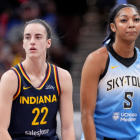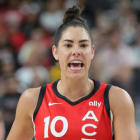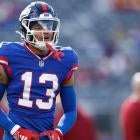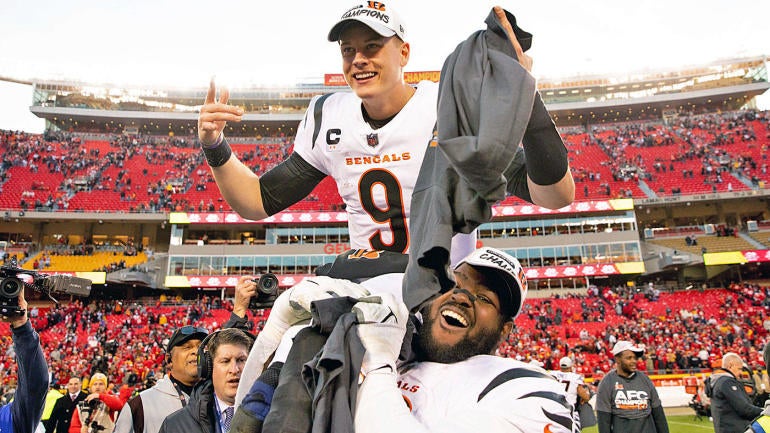
Each winter, NFL teams flock to Indianapolis for the NFL combine in hopes of finding the player who can help change the fortunes of their franchise. If they're lucky, they'll find a handful of players that they are able to draft and mold into NFL stars. If they're really lucky, they may even find a future face of the franchise, a player that leaves a permanent mark that may even include a championship trophy or two.
With the NFL Draft just around the corner, we decided to list each NFL team's most consequential draft pick ever. When making these picks, we decided to measure what the franchise was like before the player arrived, how the franchise changed during their time with the team, and their enduring impact on the franchise, assuming they are not still currently in uniform. While not everyone will agree with the following picks, what can't be debated is the impact that each player left on their franchise.
Arizona Cardinals
Larry Fitzgerald, third overall pick, 2004
While Hall of Fame safety Larry Wilson (seventh round pick, 1960 draft) was the Cardinals' first great draft pick, Fitzgerald has done the most for a Cardinals franchise that has been mired in mediocrity for most of its existence. After moving from St. Louis to Arizona in 1988, the Cardinals had just one winning season before Fitzgerald joined the team in 2004. While they won just 17 games in Fitzgerald's first three years, the Cardinals slowly but surely build a strong team around their budding star receiver, going .500 in 2007 before capturing their first NFC West division title in 2008, a season that saw Fitzgerald lead the NFL in touchdown receptions. In the playoffs, Fitzgerlad put on a show, catching 30 passes for 546 yards and seven touchdowns while leading the Cardinals to their first-ever Super Bowl appearance. In Super Bowl XLIII, his seven-catch, 128-yard, two-touchdown performance nearly led Arizona to an upset victory over Pittsburgh.
As Fitzgerald continued to put together a Hall of Fame career, the Cardinals continued to have success in the 2010s, posting three consecutive winning seasons from 2013-15 that included a run to the NFC Championship Game. Fitzgerald has also become a pillar in the Arizona community while growing the relevance of the franchise in the Grand Canyon State.
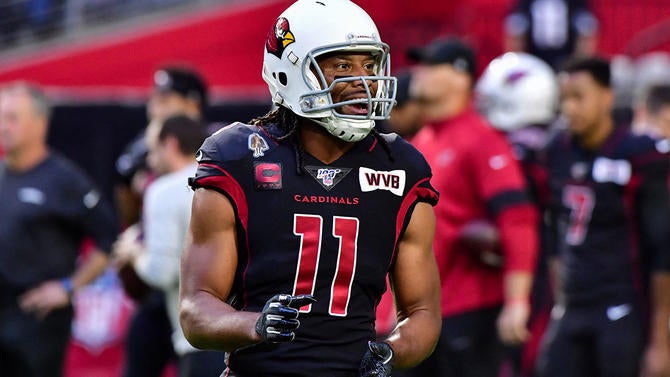
Atlanta Falcons
Matt Ryan, third overall pick, 2008
Ryan fended off stiff competition in linebacker Tommy Nobis, the first overall pick in the 1966 draft who served as the Falcons' first "face" of the franchise. Also in consideration was Hall of Fame cornerback Deion Sanders and quarterback Michael Vick (the first overall pick in the 2001 draft). But what makes Ryan stand out is his MVP season in 2016 that included leading the Falcons to their second Super Bowl appearance. While he has at times been overlooked by this era's other franchise quarterbacks, Ryan has quietly built a solid resume that includes his MVP season. Ryan is also top-10 all-time in career passing yards and touchdown passes.
Besides statistics, Ryan led the Falcons to seven winning seasons, six playoff appearances and three NFC South division titles. Atlanta, who was 4-12 the year before selecting Ryan (they went 11-5 during Ryan's rookie season), had posted just eight winning seasons since the AFL-NFL merger in 1970 prior to Ryan's arrival.
Baltimore Ravens
Ray Lewis, 26th overall pick, 1996
The second player ever selected by the Ravens (after Hall of Fame tackle Jonathan Ogden at fourth overall in '96), Lewis almost immediately gave the franchise an identity as a tough, physical team that was led by a hard-hitting defense. Four years after that draft, Lewis led the Ravens to their first Super Bowl win, a 34-7 blowout victory over the Giants in Super Bowl XXXV. Throughout the 2000s and into the 2010s, Lewis continued to be the face of the franchise while helping the Ravens become one of the league's perennial winners. Lewis capped off his Hall of Fame career by helping lead Baltimore to its second Super Bowl title, a 34-31 win over the 49ers in Super Bowl XLVII.
Buffalo Bills
Jim Kelly, 14th overall pick, 1983
Kelly, who spent two seasons in the USFL before finally coming to Buffalo in 1986, gets the nod over two of his Hall of Fame teammates, defensive end Bruce Smith and running back Thurman Thomas. Kelly, who was enshrined in Canton in 2002 (his first year of eligibility), engineered a revolutionary offensive attack that was appropriately named the "K-Gun" offense. The quick passing, uptempo offensive attack that featured the talents of Kelly, Thomas and Hall of Fame receiver Andre Reed helped the Bills dominate the AFC on their run to four consecutive Super Bowls from 1990-93. Along the way, Kelly became one of the most decorated quarterbacks of his era, earning five Pro Bowl selections over a six-year span.
Carolina Panthers
Cam Newton, first overall pick, 2011
While receiver Steve Smith (74th overall pick, 2001 draft) was considered, Newton put together the greatest season ever recorded by a Panthers player in 2015. That season, Newton became the first player in league history to throw for 35 touchdowns and run for 10 more in a season. His success spearheaded a 15-1 regular season and appearance in Super Bowl 50. Along with his success on the field, Newton has also become one of the NFL's most popular and recognizable faces while helping elevate fan interest in the team in the Carolina area.
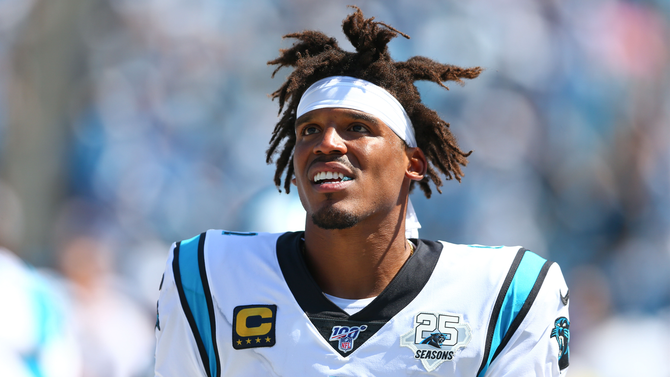
Cincinnati Bengals
Anthony Munoz, third overall pick, 1980
Joe Burrow, first overall pick, 2020
Ken Anderson (66th overall pick, 1971 draft) also deserves a shoutout, as he led the Bengals to relevance during their first full decade in existence while also leading them to their first Super Bowl appearance in 1981. But the addition of Munoz was what put the Bengals franchise into a different category. One of the greatest offensive lineman in NFL history, Munoz helped the Bengals advance to the Super Bowl a year after his selection. Over the next 10 years, Munoz was named a Pro Bowler each season and an All-Pro seven more times while helping the Bengals make it back to the Super Bowl in 1988. And while he helped the Bengals achieve relevance during his time in Cincinnati, the franchise has never been the same without Munoz, as the Bengals' most recent playoff win came with Munoz on their team in 1990.
Munoz is flanked here by Burrow, whose emergence last season helped the Bengals win the franchise's third AFC title. Burrow led the NFL in completion percentage last season while winning Comeback Player of the Year honors. Cincinnati is expected to be set up for similar success over the next decade-plus with Burrow under center.
Chicago Bears
Walter Payton, fourth overall pick, 1975
Mike Ditka (fifth overall pick, 1961) takes runner-up for the Bears after helping lead Chicago to their last championship under George Halas in 1963, his third season with the team. Also in consideration was running back Gale Sayers and linebacker Dick Butkus, a pair of Hall of Fame players that were both selected in the '65 draft.
Payton gets the nod because of his immediate/eternal impact on a Bears franchise that didn't go to the playoffs from 1964 until 1977, Payton's breakout season with the team. Over the next decade, Payton not only became the face of the Bears franchise, he became arguably the league's best player as well as the NFL's all-time leading rusher. In 1985, Payton, at age 31, rushed for 1,551 yards while helping the Bears go 15-1 during the regular season. The '85 Bears ultimately won the franchise's first -- and only -- Super Bowl title. And while he has been retired for well over 30 years, Payton, who died following a battle with cancer in 1999, continues to be revered by the Bears' franchise and fan base.
Cleveland Browns
Jim Brown, sixth overall pick, 1957
Widely regarded as the greatest running back (and greatest player) in NFL history, Brown led the league in rushing eight times during his nine-year career. Brown, who retired as the NFL's all-time leading rusher, led the Browns to their most recent championship in 1964. Brown led the Browns back to the NFL Championship Game before retiring after the '65 season at the age of 29. The Browns have yet to recapture the success they had with Brown as their tailback, as Cleveland is still in search of its first trip to the Super Bowl.
Dallas Cowboys
Roger Staubach, 129th overall pick, 1964
Bob Lilly may be Mr. Cowboy, (13th overall pick, 1961 draft), and Emmitt Smith (17th overall pick, 1990) may have been the main piece to the Cowboys' 1990s dynasty puzzle, but Staubach, after replacing Craig Morton during the 1971 regular season, led the Cowboys from perennial bridesmaids to America's Team. After becoming a starter, Staubach led the Cowboys to their first Super Bowl title, earning MVP honors in Dallas' 24-3 victory over Miami in Super Bowl VI. Over the next eight years, Staubach would lead the Cowboys back to three more Super Bowls that included a 27-10 win over Denver in Super Bowl XII. In the process, Staubach become arguably the NFL's most popular player while helping elevate the Cowboys' status as the league's most marketable team.
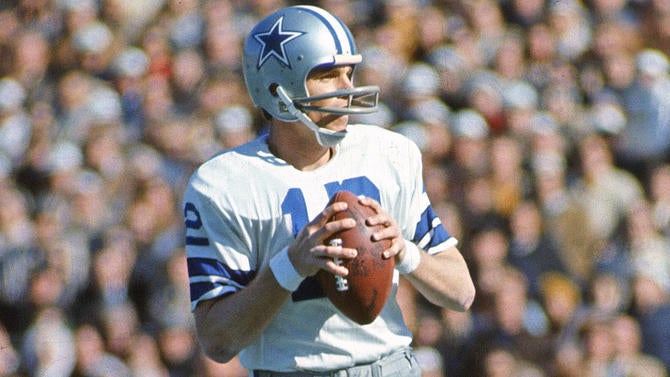
Denver Broncos
Terrell Davis, 196th overall, 1995
Technically, John Elway wasn't drafted by the Broncos; Denver traded for him after the Colts made him the first overall pick in the 1983 draft. Since Elway wasn't drafted by the Broncos, the nod here goes to Davis, whose remarkable play during the late '90s helped Elway retire as a two-time Super Bowl champion. While his career was cut short due to injury, Davis still managed to win the 1998 league MVP, a rushing title (while also becoming a 2,000-yard rusher), two Super Bowls and a Super Bowl MVP award after rushing for 157 yards and three scores in Denver's upset win over Green Bay in Super Bowl XXXII. Davis rushed for a whopping 1,140 yards and 12 touchdowns in eight career playoff games.
Detroit Lions
Barry Sanders, third overall, 1989
The Lions had toiled through five consecutive losing seasons before drafting Sanders, who immediately ushered in a new, exciting era of football in Detroit. As a rookie, Sanders earned All-Pro honors after rushing for 1,470 yards and 14 touchdowns. In 1990, Sanders earned his first of four rushing titles. The next season, Sanders led the league in rushing touchdowns while leading the Lions past the Cowboys in the divisional round of the playoffs.
After a down year in 1992, Sanders and the Lions would make the playoffs four out of the next five years, with the running back emerging as the decade's best -- and most exciting -- offensive player. In 1997, Sanders earned co-league MVP honors after rushing for 2,053 yards and helping the Lions clinch a wild-card berth.
While Detroit did manage to make the playoffs following Sanders' shocking retirement during the '99 offseason, the Lions failed to sustain that success in the 2000s, missing the playoffs each year during the decade that included a winless season in 2008.
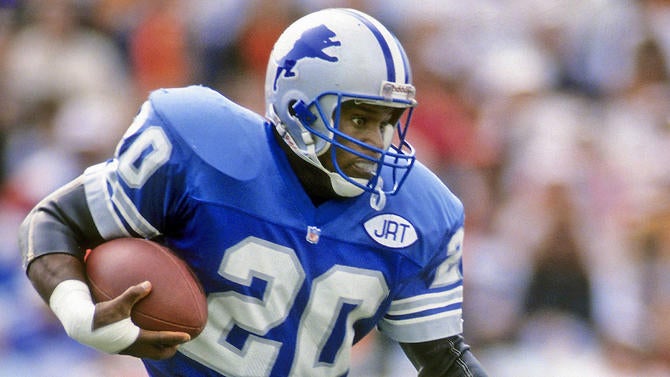
Green Bay Packers
Bart Starr, 200th overall, 1956
While the Packers have been blessed with a slew of great players, Starr is the face of the greatest run of success in franchise history. With Starr under center, the Packers won five championships during the '60s that includes three straight titles from 1965-67. Starr, the MVP of the first two Super Bowls, also played a key role in the Packers' wins over the Cowboys in the '66 and '67 championship games, as his last-minute score gave Green Bay a 21-17 win in the fabled Ice Bowl. While Brett Favre and Aaron Rodgers have followed in his footsteps, Starr remains the player by which all Packers quarterbacks are measured.
Houston Texans
J.J. Watt, 11th overall pick, 2011
While receiver Andre Johnson (third overall, 2003 draft) was the Texans' first great player, Watt immediately turned the Texans into a perennial playoff team. After missing the playoffs in each of their first nine seasons, the Texans advanced to the divisional round of the playoffs during Watt's first two seasons in Houston. The Texans made the playoffs four more times during the decade, with Watt winning the league's Defensive Player of the Year award three times. Watt's 96 sacks are the most by an NFL defensive end since 2011.
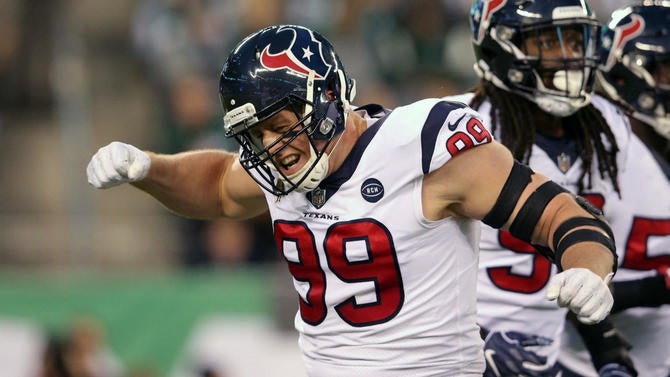
Indianapolis Colts
Peyton Manning, first overall, 1998
The Colts had made the playoffs just three times during their first 14 seasons in Indianapolis until Manning came to town in 1998. One year later, Manning led the Colts to a 13-3 record, as Indianapolis would miss the playoffs just once over the next decade. While Manning emerged as a five-time league MVP, the Colts also reached the NFL pinnacle in 2006, as Manning delivered an MVP performance in a 29-17 win over the Bears in Super Bowl XLI.
Manning's impact on Indianapolis has been everlasting, as the team's new stadium, Lucas Oil Stadium, has often been referred to as "The House That Manning Built."
Jacksonville Jaguars
Tony Boselli, second overall, 1995
The franchise's first draft pick, Boselli quickly emerged as arguably the best left tackle in football, earning five consecutive Pro Bowl selections and three All-Pro nods from 1995-2000. His play helped the Jaguars advance to the AFC Championship Game in 1996, the franchise's second year of existence. Jacksonville reached another AFC title game in 1999 before injuries forced Boselli into retirement after the 2001 season. This summer, Boselli will become the first member of the franchise to be inducted into the Pro Football Hall of Fame,
Kansas City Chiefs
Patrick Mahomes, 10th overall, 2017
A perennial playoff disappointment, the Chiefs finally broke through with Mahomes under center in 2019. A year after being named league MVP, Mahomes led the Chiefs to their first Super Bowl win in 50 years, throwing for 286 yards and scoring three touchdowns in Kansas City's 31-20 win over the 49ers in Super Bowl LIV. Mahomes also led a Chiefs team that become the first in NFL history to overcome three 10-point deficits in a single postseason. The first player in league history to win a Super Bowl and a league MVP before his 25th birthday, Mahomes is the third-youngest player in history to be named Super Bowl MVP.
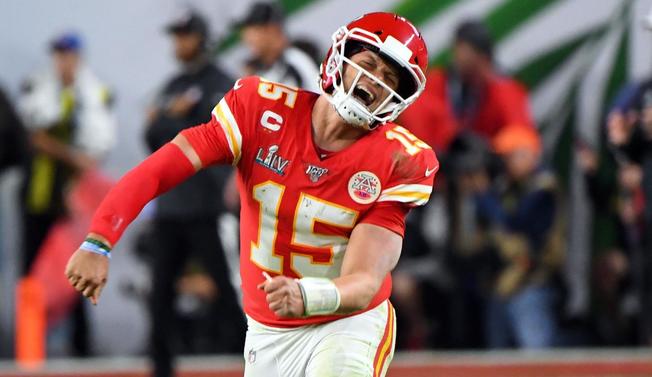
Las Vegas Raiders
Ken Stabler, 52nd overall, 1968
Like Staubach did for the Cowboys, Stabler lifted the Oakland Raiders from bridesmaids to champion after taking over as the team's starting quarterback. While he didn't become a starter until age 28, Stabler quickly made up for lost time, leading the Raiders to five consecutive AFC title games. After falling short against Dolphins in 1973 and in consecutive postseasons to the Steelers, Stabler and the Raiders finally broke through in 1976, going 13-1 in the regular season before defeating the Patriots and Steelers in the playoffs. In Super Bowl XI, Stabler helped lead the Raiders to their first Super Bowl win, a 33-14 drubbing of the Vikings. The Raiders would go onto win two more Super Bowls with Jim Plunkett at QB while Stabler finally earned his rightful place in Canton in 2016.
Los Angeles Chargers
Junior Seau, fifth overall, 1990
Seau gets the nod over quarterback Dan Fouts (64th overall, 1973) and LaDainian Tomlinson (fifth overall, 2001) after a career that saw him lead the San Diego Chargers to their first Super Bowl appearance at the end of the 1994 season. After seven consecutive non-winning seasons, the Chargers saw steady improvement after drafting Seau, winning a division title in 1992 and the AFC title two years later. In the process, Seau became the best inside linebacker of his era, earning 12 straight Pro Bowl selections and six All-Pro selections. Seau also became the face of the franchise as well as one of the most popular athletes in San Diego history.
Los Angeles Rams
Orlando Pace, first overall, 1997
Pace gets the nod over several Hall of Fame players that includes defensive end Deacon Jones, running back Eric Dickerson and offensive lineman Jackie Slater. While he wasn't the most famous member of the "Greatest Show on Turf," Pace's stellar protection of quarterback Kurt Warner and the running lanes he helped open for Marshall Faulk were a big part of the St. Louis Rams winning their first Super Bowl title in 1999 while appearing in another Super Bowl two years later. Along the way, Pace was named to seven straight Pro Bowls while earning three All-Pro nods.
Miami Dolphins
Dan Marino, 27th overall, 1983
Marino did not bring a third Lombardi Trophy to Miami, but he did become the franchise's greatest player while keeping the Dolphins in the championship conversation for a considerable portion of his 17-year career. In just his second season, Marino put together arguably the greatest passing season in NFL history, throwing for then-record totals of 5,084 yards and 48 touchdowns while leading the Dolphins to Super Bowl XIX. He retired after the 1999 season as the league's all-time leader in passing yards while leading the Dolphins to the playoffs 10 times.

Minnesota Vikings
Alan Page, 15th overall, 1967
The first defensive player to be named the league's MVP, Page anchored the legendary Purple People Eater defense that helped lead the Vikings to an NFL title in 1969 and four Super Bowl appearances from 1969-76. During that time, Page rivaled Pittsburgh's Joe Greene as the NFL's best defensive tackle, earning nine consecutive Pro Bowl selections and six All-Pro nods. The Vikings have not returned to the Super Bowl since parting with Page six games into the 1978 season.
New England Patriots
Tom Brady, 199th overall, 2000
While John Hannah (fourth overall, 1973) was the face of the franchise during the 20th century, Brady has taken the mantle as the Patriots' most consequential draft pick ever after leading them to an unprecedented run of six Super Bowl wins since 2001. Along with their Super Bowl wins, the Patriots with Brady under center have won nine conference titles and 17 division titles while winning at least 10 regular-season games a record 17 consecutive times. After starting his career as the Patriots' fourth-string quarterback, Brady's 249 career wins is the highest total by a starting quarterback in league history. He is also the only four-time Super Bowl MVP and six-time Super Bowl champion. Making Brady's success in New England more impressive is the fact that the Patriots won two home playoff games in the 40 years before Brady's arrival.
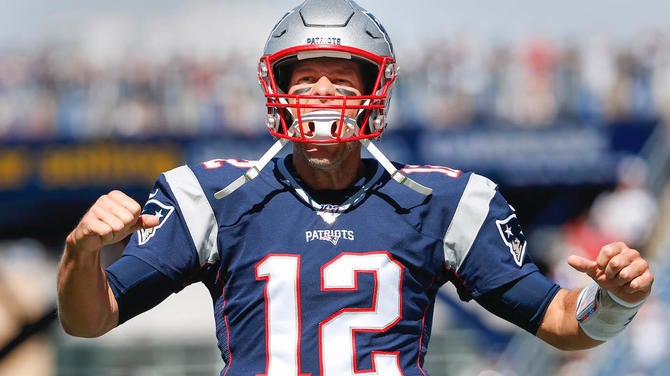
New Orleans Saints
Archie Manning, second overall, 1971
While he never played for a winning team, Manning, a Mississippi native who starred at Ole Miss before coming to New Orleans, was the Saints' first bona fide star. He also gave the fan base something to cheer about on a weekly basis during the team's lean years during the 1970s. Manning's fighting spirit was mimicked three decades later by quarterback Drew Brees, who led the Saints to a Super Bowl win in 2009, three years after signing with New Orleans as a free agent.
While Manning is the Saints' most consequential draft pick, the franchise's most impactful undrafted player is linebacker Sam Mills, who led the Saints to four playoff berths and five winning seasons from 1987-92 after the franchise failed to make the playoffs in each of their first 20 seasons.
New York Giants
Lawrence Taylor, second overall, 1981
One of the greatest defensive players ever, Taylor helped turn the Giants from a struggling franchise to one of the NFL's best teams during the mid 1980s and into the '90s. Led by Taylor, the Giants captured two Super Bowl victories that included their shocking upset against the defending two-time champion 49ers in the 1990 NFC title game and their surprising upset over the favored Bills a week later in Super Bowl XXV. A first-ballot member of the Pro Football Hall of Fame, Taylor was a 10-time Pro Bowler, eight-time All-Pro, a league MVP and a four-time defensive Player of the Year.
Taylor gets the nod over halfback Frank Gifford (11th overall, 1952), linebacker Sam Huff (30th overall, 1956) and Michael Strahan (40th overall, 1993). Eli Manning also would have been considered if he wasn't drafted by the Chargers with the first overall pick in the '04 draft.
New York Jets
Joe Namath, first overall, 1965
Broadway Joe not only changed the Jets' franchise forever, he also changed the game of football as we know it. While his daring passing style helped open up the game, Namath's bold guarantee heading into Super Bowl III foreshadowed the pomp and pageantry that currently exists leading up to the big game. Namath delivered on his guarantee, riddling the Colts' formidable defense to the tune of 17-for-28 passing without an interception in the Jets' 16-7 win. The win helped lead to the AFL-NFL merge of 1970, as the Jets are still owners of the greatest upset win in pro football history. Namath, who was just 25 when he led the Jets to victory over the Colts, went on to enjoy a Hall of Fame career while becoming one of the Big Apple's most celebrated athletes.
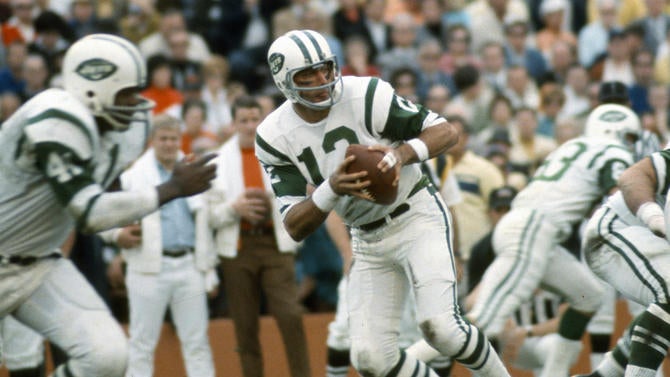
Philadelphia Eagles
Steve Van Buren, fifth overall, 1944
Founded in 1933, the Eagles had never placed better than second in their division before Van Buren, who guided the Eagles to their first NFL title game in 1947. After losing the title game to the Cardinals, Van Buren led the Eagles to consecutive NFL titles in '48 and '49. His 5-yard touchdown was the only touchdown in Philadelphia's 7-0 victory over St. Lous in the '48 title game. Van Buren's 196 rushing yards propelled the Eagles to a 14-0 win over the Rams in the '49 title game.
Van Buren, who was inducted into the Hall of Fame in 1965, won four rushing titles while also leading the league in rushing touchdowns on four different occasions. He also led the league in yards from scrimmage in 1947 and in '48.
Pittsburgh Steelers
Joe Greene, fourth overall, 1969
The Steelers' dynasty began with Greene, who led the Steelers from perennial losers to the NFL's most successful franchise since the AFL-NFL merger. With Greene leading the way, the Steelers won four Super Bowls in a six-year span from 1974-79, as Greene earned 11 consecutive Pro Bowl selections over that span. Greene, the leader of Pittsburgh's vaunted Steel Curtain defense, was also named the NFL's Defensive Player of the Year in 1972 and in 1974. Greene, whose No. 75 was retired by the Steelers in 2014, later won two more Super Bowls as a member of the team's scouting department in 2005 and in 2008. Greene also helped develop the intensity and culture that still exists within the Steelers' organization, a physical, blue collar culture that has won the affection of one of the biggest fan bases in sports.
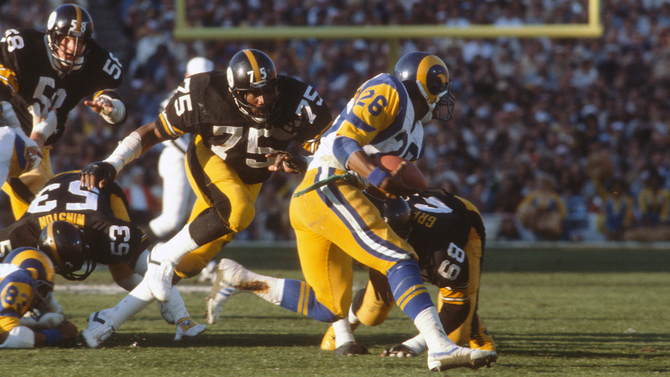
San Francisco 49ers
Joe Montana, 82nd overall, 1979
Like Greene, the 49ers' dynasty begins with Montana, who excelled within Bill Walsh's West Coast Offense. With Montana leading the way, the 49ers owned the '80s, winning four Super Bowls during the decade. A two-time league MVP, Montana became the first player to win three Super Bowl MVP awards while not throwing a single interception in Super Bowl play. Montana's magic included his game-winning touchdown pass to Dwight Clark in the '81 NFC title game, his dominance over Miami's "Killer Bee" defense in Super Bowl XIX and his game-winning drive in San Francisco's 20-16 win over the Bengals in Super Bowl XXIII.
Seattle Seahawks
Russell Wilson, 75th overall, 2012
While receiver Steve Largent (117th overall, 1976) led the Seahawks to relevance in their early seasons, Wilson led Seattle to prominence shortly after becoming the team's starter in 2012. In just his second season under center, Wilson helped guide the Seahawks to their first Super Bowl win, a 43-8 trouncing over the Broncos in Super Bowl XLVIII. Wilson spearheaded an improbable comeback victory over the Packers in the '14 NFC title game before losing to the Patriots in Super Bowl XLIX.
Now 10 seasons in, Wilson has blossomed into one of the NFL's premier quarterbacks, with nine Pro Bowl selections under his belt. Wilson's individual success has led to team success, as he compiled a 104-53-1 overall record as Seattle's starting quarterback. Wilson's impact in Seattle may be even more impactful in seasons to come if the Seahawks can take advantage of the draft picks they received from Denver in the trade that sent Wilson to the Broncos.
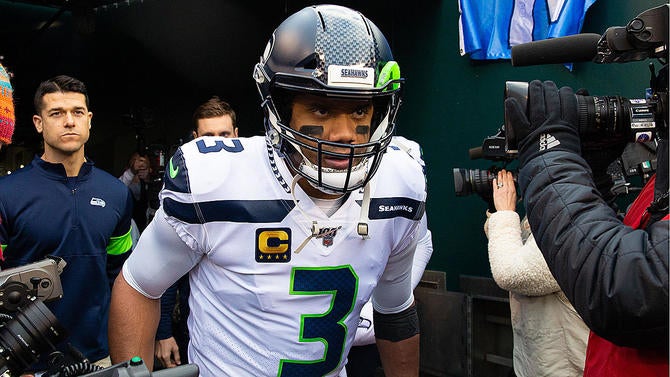
Tampa Bay Buccaneers
Warren Sapp, 12th overall, 1995
Derrick Brooks, 28th overall, 1995
The two cornerstones of a dominant Buccaneers defense, Brooks and Sapp helped transform a hapless team into a Super Bowl champion. The best defensive tackle of his era, Sapp, the 1999 Defensive Player of the Year, earned seven straight Pro Bowl selections that included four consecutive All-Pro nods. Brooks, one of the most versatile linebackers in NFL history, was an 11-time Pro Bowler, a five-time All-Pro and the 2002 NFL Defensive Player of the Year. Teamed up with safety John Lynch, Sapp and Brooks helped lead the Buccaneers to their first Super Bowl win, a 48-27 victory over the Raiders in Super Bowl XXXVII. Both Sapp and Brooks' careers have been immortalized in Canton.
Tennessee Titans
Steve McNair, third overall, 1995
"Air McNair" was the heart and soul behind the Titans' rise from mediocrity to AFC supremacy shortly after coming to Tennessee in 1997. Two years after moving from Houston to Nashville, McNair helped lead the Titans to a 13-3 regular season record before defeating Buffalo, Indianapolis and Jacksonville in the playoffs. In Super Bowl XXXIV, McNair helped engineer a gallant comeback that ultimately fell one yard short. Four years later, McNair took home MVP honors while nearly leading the Titans past the eventual champion Patriots in the divisional round of the playoffs.
McNair's running mate, Eddie George, was a close second here, as the former Heisman Trophy winner earned four straight Pro Bowl nods from 1997-2000. His 95 yards and two touchdowns also played a role in the Titans' gallant comeback bid in Super Bowl XXXIV.
Washington Commanders
Sammy Baugh, sixth overall, 1937
After Washington lost in the 1936 NFL title game, Baugh led the team to victory over the Bears in the '37 title game, the franchise's first NFL title. Baugh, a six-time Pro Bowler and three-time All-Pro at tailback, helped lead Washington to another championship in 1942 and two other NFL title game appearances in 1940, '43 and in '45. A member of the Pro Football Hall of Fame, Baugh won three passing titles while also leading the league in touchdown passes on two different occasions. Washington would go 40 years between championships before John Riggins led Washington to victory over Miami in Super Bowl XVII.









